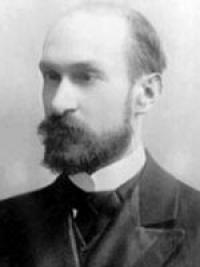Вы здесь
Research Akyrtas


Kazakhstan Travel Explore.
“The huge stones, the gigantic dimensions of the entire structure, the courage of the design, the art and thoroughness of execution, and finally, the seemingly isolated isolation of the community among the dry desert steppes, all this makes us look at Akyrtash as one of the remarkable ancient architectural structures in Turkestan. For such a cyclopean undertaking it was necessary to have enormous resources, it was necessary to have a mass of slave hands and enormous wealth. Only such a powerful national ruler could decide on this”
Geologist D.L. Ivanov.
Visit to Akyrtas.
Monuments of history and architecture, books and musical works, archaeological discoveries, park constructions and much, much more - everything that surrounded and filled with meaning the life of our ancestors, predecessors and contemporaries is in our hands today.
The task before the modern generation is to preserve and increase this wealth of spiritual and material culture. For more than 140 years, the study of one of the most mysterious monuments, the Akyrtas complex, located at the foot of the Kyrgyz Alatau, 40 kilometers east of modern Taraz, in the Zhambyl region, has begun.
Akyrtas is an unfinished monumental structure consisting of stone blocks. It is interesting that this monument of history and architecture was sketched, photographed many times, and the layout was subjected to expert examinations, but each time the opinions of scientists diverged in the conclusions, otherwise they were controversial both in the purpose of the building and the time of its construction.
The first to Akyrtas, according to the doctor of historical sciences, director of the Alkey Margulan Institute of Archeology K.M. Baipakov, the Russian artist Znamensky drew attention, who in 1864, as part of a military expedition, visited the ruins of a monumental structure and left interesting sketches of fragments of walls.
Then, in 1867, the ancient monument was examined by the famous orientalist, orientalist, archaeologist and numismatist Petr Ivanovich Lerkh (1827 - 1884), who determined that Akyrtas is a Buddhist monastery.
The famous orientalist Vasily Vladimirovich Bertold (1869 - 1930) visited the complex in 1893 and, in his descriptions, cited legends associated with the monument, and also expressed a version - this is the construction of the first Christians. In his opinion, Akyrtas was a monastery of Nestorians - followers of one of the directions of Christianity, which, as heretics, began to be persecuted since 431. It is known that the Nestorians spread along the Silk Road, founded their colonies and diasporas in a number of Semirechye cities.
In 1946, an expedition for architecture under the Council of Ministers of the Kazakh SSR, having examined the monument, refuted attempts to consider Akyrtas a Buddhist or Nestorian monastery, suggesting that it was more like a fortress palace, erected in the VIIIth - IXth centuries.
A number of scholars have suggested that Akyrtas is nothing more than a caravanserai of the X - XII centuries. Finally, another attempt to explain the purpose of Akyrtas, the time of its construction and the political events connected with it was made by the German researcher Burhard Brentjes.
He suggested that Akyrtas was built by order of the Arab commander Kuteiba. The researcher at the same time names the exact start date for the construction: 714 - 715 years, when Kuteiba ibn Muslim became governor in Central Asia.
It is authentic that at the beginning of the XIIIth century the building had already become a monument, and its ruins were seen in 1223 by the wandering Taoist monk Chan Chun, who set off from China through Sairam to Samarkand in 1222, describing his journey to Genghis Khan’s headquarters.
Studies conducted in 1996 together with scientists from France and under the leadership of Karl Baipakov, revealed a number of details that allow one more version to be born. During the excavations it was found that in one of the four parts of the building, in its western wall, on the site of the previously assumed passage, the mihrab was to be located - a south-facing niche in the wall where Muslims pray. In the northern part of the courtyard, which was previously considered deaf, three vestibule passages were connected that connected to the street.
Their presence indicates the public purpose of the building. “If we consider that there was a mosque in Akyrtas, then this removes the assumptions about the Nestorian or Buddhist purpose of the entire complex, and also clarifies the time points of the report,” says Karl Moldahmetovich Baypakov.
- The date of construction of Akyrtas can be determined by an even earlier time - the middle of the VIII century. And yet, the analogs of the Akyrtas layout are taken to the architecture of the Near and Middle East. It is very similar to the layout of the palaces of Samarra - the summer residence of the Arab caliphs, as well as the palaces of Syria and Jordan.
“All this makes us look at the construction of Akyrtas as a palace, which should be the summer residence of the local ruler,” says K. M. Baipakov. - And it could be, in my opinion, the Karluk Hagan: as you know, the Karluks (Turkic tribe) ruled in the western part of the Seven Rivers from 766 to 893, and in 751 they defeated the Chinese army in the battle on Talas near the city Atlah.
The latest data obtained as a result of archaeological research, allow identifying Akyrtas with the medieval city of Kasribas, located on the Great Silk Road. Most scholars believe that Akyrtas was built on the orders of the main organizer of the Arabs' aggressive campaigns in Central Asia, the Arab commander of Kuteiba ibn Muslim in 714-715. He was not completed due to the fact that Kuteibu was accused of separatist sentiments and executed.
Authority:
Andrey Berezin, local history writer.
Photo
Alexander Petrov.







